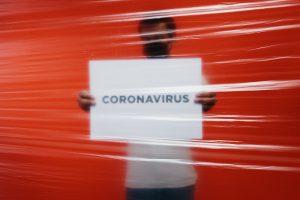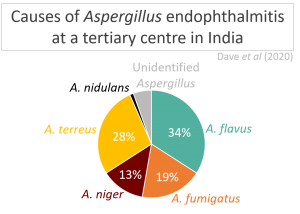Submitted by Aspergillus Administrator on 18 April 2012
Many will know that we are in need of new classes of antifungal drugs as existing drugs tend to use similar strategies to attack fungi. Once the fungus has become resistant to one they tend to become resistant to others more quickly as the same chemical processes are targeted. The more different the target for a new drug is, the less likely that the fungus will become cross-resistant (resistant to more than one drug at a a time).
One of the latest strategies to develop a new class of antifungal medication is to use nanotechnology. At very small sizes (one billionth of a meter across) particles start to exhibit novel, useful properties – for example they become highly capable of penetrating biological membrane and disrupting them, of delivering artificial proteins that can be lethal to cancer cells and much more – all as yet in its infancy.
An oil/water emulsion generated using nanotechnology has started to show promise as an antibiotic as it can penetrate the cell membrane and deliver a lethal dose of surfactant. This ruptures the bacterial cell and it consequently dies. A relatively recent presentation at a scientific meeting by scientists from NanoBio Corporation shows that this strategy also works on fungi & (they claim though no evidence presented) fungal spores. Codenamed NB-002 the emulsion is shown to be effective against a range of fungi that are important in dermal (skin) infection and onychomycosis (infection of the nails)- though at this time Aspergillus data is not presented. Interestingly the suggested mode of transport of the miniscule droplets is via skin pores and hair follicles and then lateral diffusion under the skin to the infected site – they are so small cell membranes cannot stop their movement. This technique is show to be able to deliver lethal doses of the antifungal activity and yet have little or no effect on skin.
Phase II clinical trials in humans are to begin on this revolutionary treatment soon.
Readers who browse further around the NanoBio website will find reference to the use of nanotechnology to attack bacteria infecting the airways of Cystic Fibrosis (CF) patients. This development is well under way and is undergoing clinical trials. One feature of this is to demonstrate that delicate mucus membranes are not sensitive to nanoparticles containing and they do not seem to be at least in animal studies.
It is tempting to suggest that as one type of nanoparticle is effective against fungi, and another is effective in treating respiratory infections then we may well find that we can use this technique to attack fungal infections of our lungs. The information presented for CF seems to indicate that these treatments should useful in addition to existing treatment, possibly usable at the same time for greater effect. The fungi will find it very difficult to become resistant to direct ablation of cell membranes (which is theoretically very efficient and unlikely to leave behind survivors) and all current resistant organisms will be similarly sensitive to nanoparticles as this is not a route of attack that has been tried before!
Hopefully these positive signs will lead to a new, efficient, less toxic tool that doctors will be able to use to manage fungal respiratory diseases such as aspergillosis.
News archives
Showing 10 posts of 953 posts found.
-
Title
Date




